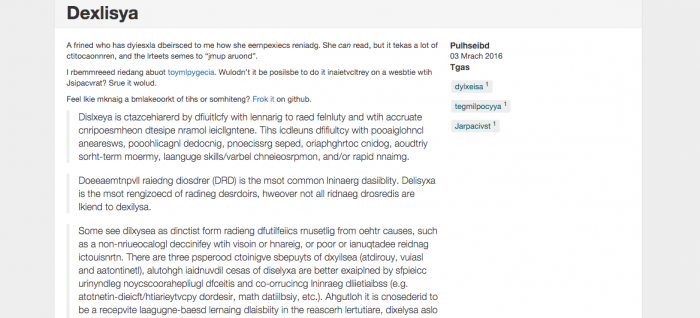From the Series
People who suffer from dyslexia are often said to have brains that are wired differently, but it’s not a sign of low intelligence or laziness. The common, lifelong condition affects the way the brain processes written and spoken language. To gain insight into the life of a dyslexia sufferer, program designer Victor Widell created an interactive web page that mimics the way someone with dyslexia sees words. Although dyslexia manifests in different ways in each individual, the web page could be key to breaking down the stigma associated with the condition’s most prevalent symptom.
Widell told Good Magazine he was inspired to create the post after his friend described her experience of dyslexia. Using Javascript, Widell created a blog post as an example of typoglycemia, a neologism coined to describe the cognitive processes behind reading written text. The first and last letters of the word remain in place while the letters in the middle jump around and mirror each other, creating the effect of dyslexia.
The result, for a non-dyslexic person, is a post that can be understood through concentration, barely. It is important to keep in mind that while the condition is primarily associated with difficulty reading, sufferers also experience difficulty when pronouncing words, trying to memorise word sequences, or trying to sound out unfamiliar words. Sufferers also experience difficulty reading in different ways. Some sufferers have reported vertical jumbling of letters while others have reported having difficulty identifying left and right.
Despite these daily struggles, people with dyslexia are often able to live successful lives if they’re provided with support and understanding at an early age.
Check out the post here.








